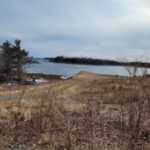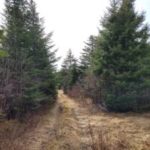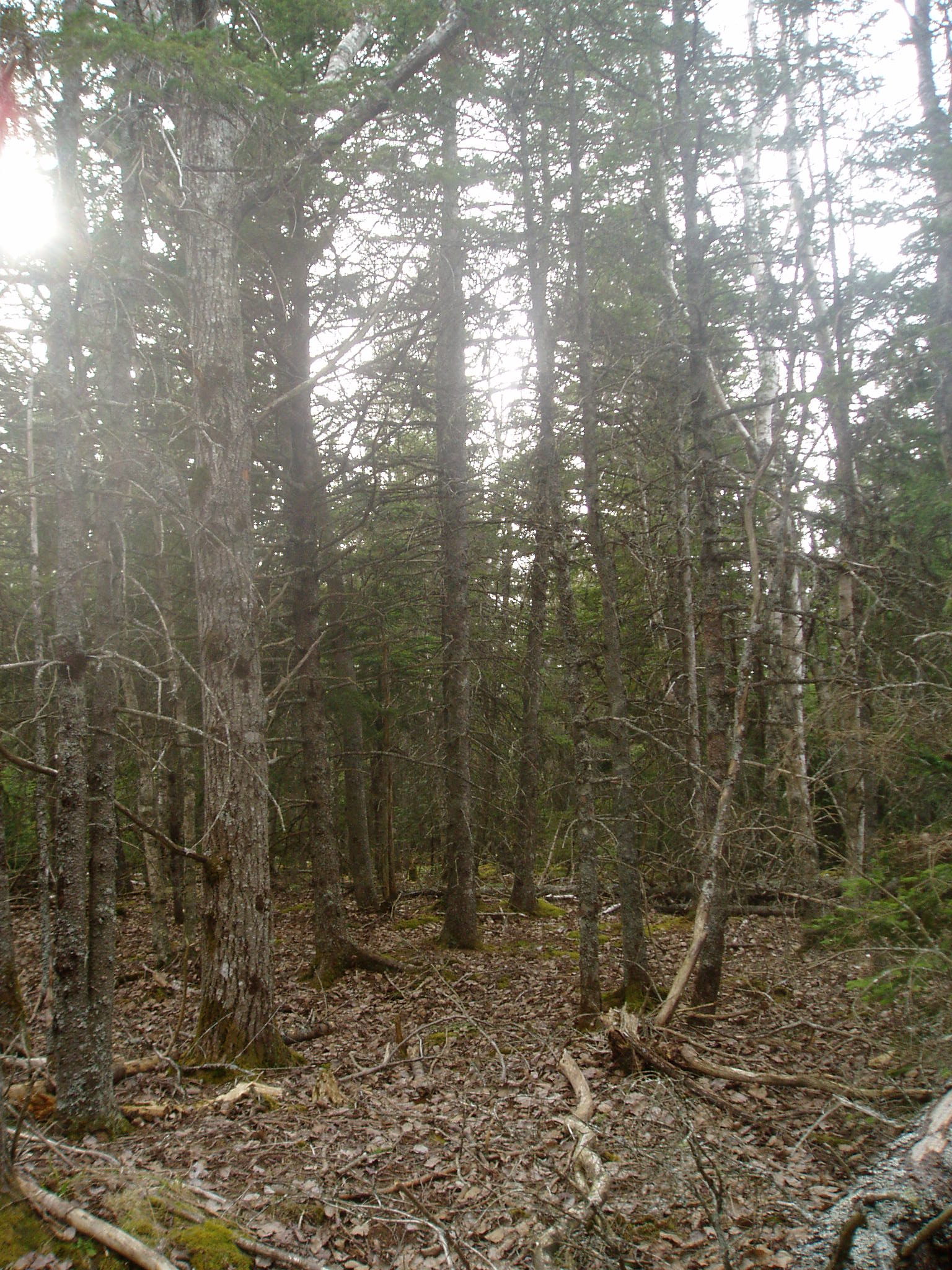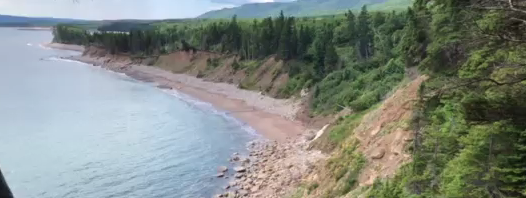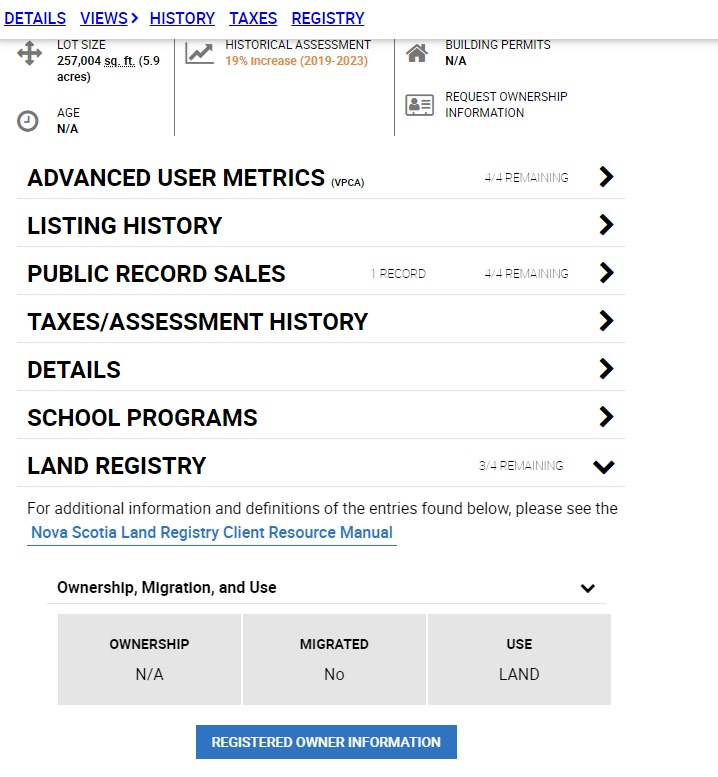A Land Survey is your official “map” of your Nova Scotia land
“Is it surveyed?” is a common question that comes up when buying land in Nova Scotia, or anywhere really. While a survey isn’t essential, it’s the surest way to fully understand the boundaries of a property. And for certain activities like subdividing land, it’s essential. In this post we’ll dive into the ins and outs of surveying land, and include a list of Nova Scotia surveyors for each region.
A land survey to confirm property rights
If you’re buying or owning property in Nova Scotia, getting a land survey can help you protect your investment. The work of a surveyor produces a detailed map that shows exactly where your property lines are, which is quite handy for avoiding any mix-ups with the neighbors. Typically you can see the surveyor’s work with your own eyes – in brush-covered areas they will typically cut (or “slash”) a clear trail along the boundary lines. As the landowner, it’s important to keep these boundaries cut. If you let the vegetation erase those trails, you’re losing some of the value of the investment in the survey.
In Nova Scotia, land can take on some strange dimensions. Narrow, long rectangular lots exist in many places. A 200-acre lot might be just 50-feet wide, so knowing where the property abuts the neighbour’s is important. And surveys don’t just mark out the boundaries; they also show where buildings and fences sit on your property, as well as existing rights of way or easements, which can be quite helpful if there’s ever a disagreement over land.
In one instance I purchased property and later realized as I looked at a satellite map that there was a neighbour’s barn that was clearly encroached on my land. I did what I often do when predicaments arise – absolutely nothing – but luckily the owner reached out to me to resolve the problem. Part of the solution of course was a survey. Together we planned out some subdivision lines and engaged a surveyor to make it official.
But it’s not just about solving disputes. Knowing the exact scope of your land is useful if you ever want to sell your place or build something new. Everyone involved gets to see the clear-cut lines, which makes everything smoother.
But again, a survey isn’t essential. I typically only get a survey done if there are important questions or issues to solve, or if there’s a development work that requires it such as subdivision. Another thing to explore is whether the property has been previously surveyed. Some surveys will appear in the Property Online Land Registry, but it’s not automatic that all surveys get added to that database. In the example I referenced earlier, I can go to Property Online and view the survey that was created to enable subdivision of the lot. In another example, a neighbour shared with me a survey that was done about 10 years ago – searching Property Online does not turn up that survey.
If you don’t have any luck turning up old surveys, you might be surprised how much you can observe from the land directly. Metal survey markers are often placed at the corners of property boundaries. One parcel I owned had markers on a few corners, a lakefront on another side, and a clear natural boundary (a stream) on the other. This made the boundaries pretty evident without the need of a survey.
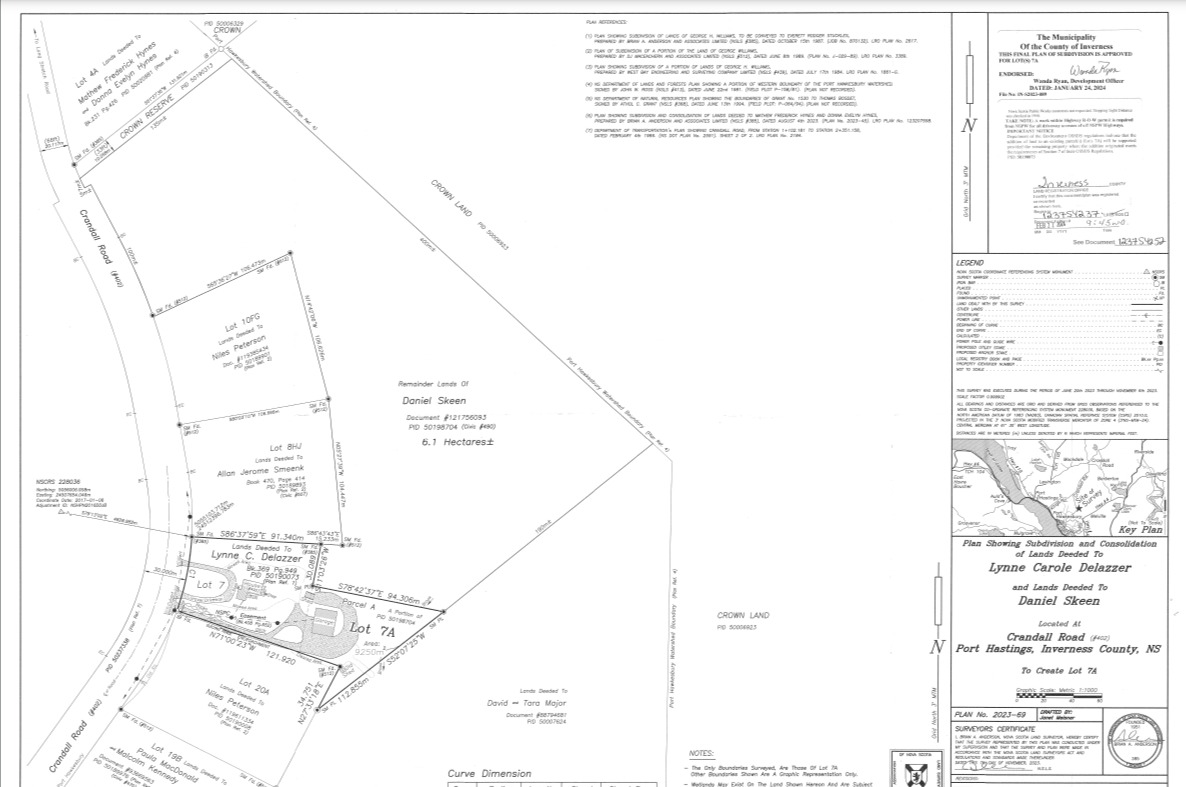
Facilitating Real Estate Transactions
When it comes to buying or selling property in Nova Scotia, having a land survey can give the buyer some assurance that there are no discrepancies with the boundaries of the lot as seen on sites like Viewpoint or Property Online. A professionally created survey gives everyone involved a clear picture of what’s being dealt with, which can really speed things up and boost confidence in the deal.
I have had buyers include different price points in their offers to buy land. For one 30-acre lot, there was an as-is offer, and an offer with an extra $5,000 if the land had a survey. The buyer can also offer to complete the survey at their own expense, with a provision to buy the land if the survey proves true to the description provided.
Most banks and lenders want to see a recent land survey before they’ll hand over any cash, to ensure that there are no legal issues with the boundaries that could mess things up later.
Development and Land Use Planning
When you’re looking to develop or use land in Nova Scotia, a land survey is like having a roadmap that not only guides you through the local zoning laws but also helps you protect the environment and plan for the future. Let’s break it down:
First up, zoning compliance with Nova Scotia Land Use Bylaws. Nova Scotia’s got its own set of rules about what you can and can’t do on a piece of land, depending on where it’s located. Want to build a new coffee shop or a cozy cottage? You’ll need to check that your plans align with local zoning regulations. A land survey provides important details to make sure your project doesn’t turn into a zoning nightmare.
A land survey can also point out sensitive areas like wetlands or wildlife habitats on your property that need to be protected. By knowing this upfront, you can plan your developments around these areas, ensuring you’re doing your part to keep the local ecosystem thriving.
Lastly, thinking about the future is key. Whether you’re planning a commercial development or a residential neighborhood, a land survey lays the groundwork for what’s possible. It can help you visualize the space, plan out utilities, and see potential obstacles before they become expensive problems. This foresight can save you time, money, and headaches down the road, making sure your development is practical and sustainable.
In the case of subdividing land, a surveyor will typically provide a complete solution that involves obtaining permits from the municipality and coordinating the review and approval of the application for subdivision. A Nova Scotia real estate lawyer is required as well for registering the new parcel. Another tip: if you need to have the land migrated, do that first! By migrating the full parcel first, you will not need to spend more money to migrate subdivided properties later.
The Cost of A Land Survey in Nova Scotia
Brace yourself – surveys don’t come cheap. Here are some quotes I’ve received:
- $1,500 for surveying a 16-acre property
- $11,000 for surveying and subdividing a 100-acre property with very steep peaks and valleys
- $20,000 for surveying a 30-acre property that was flat and grassy
My best advice is don’t get just one quote. You will find a surprising range of variation from one provider to another. Another important point: get in the queue early. Not much surveying happens in the winter months, so surveyors typically start off in the Spring with a huge backlog of projects that can sometimes extend well into the summer. For one of the quotes above I was told in April I’d have to wait until next year.
Generally your spot is held by placing a deposit, such as 10% of the estimated price.
Find a Nova Scotia Surveyor
The best source I have found for locating surveyors in Nova Scotia is the Association of Nova Scotia Land Surveyors, which has a Find by Location page that includes listings for each region of Nova Scotia.
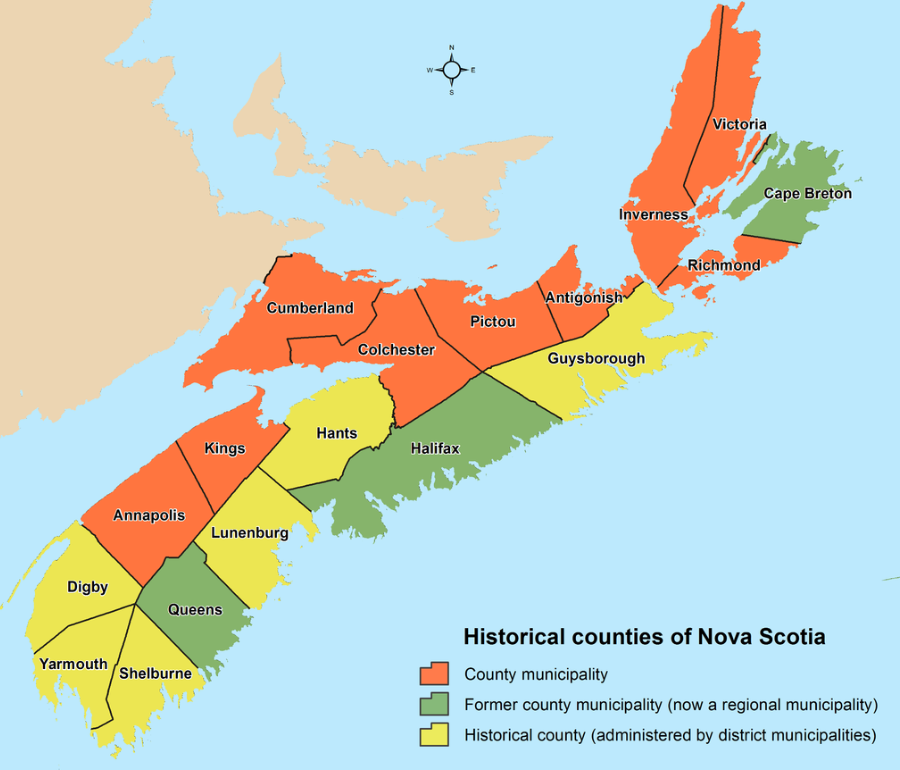

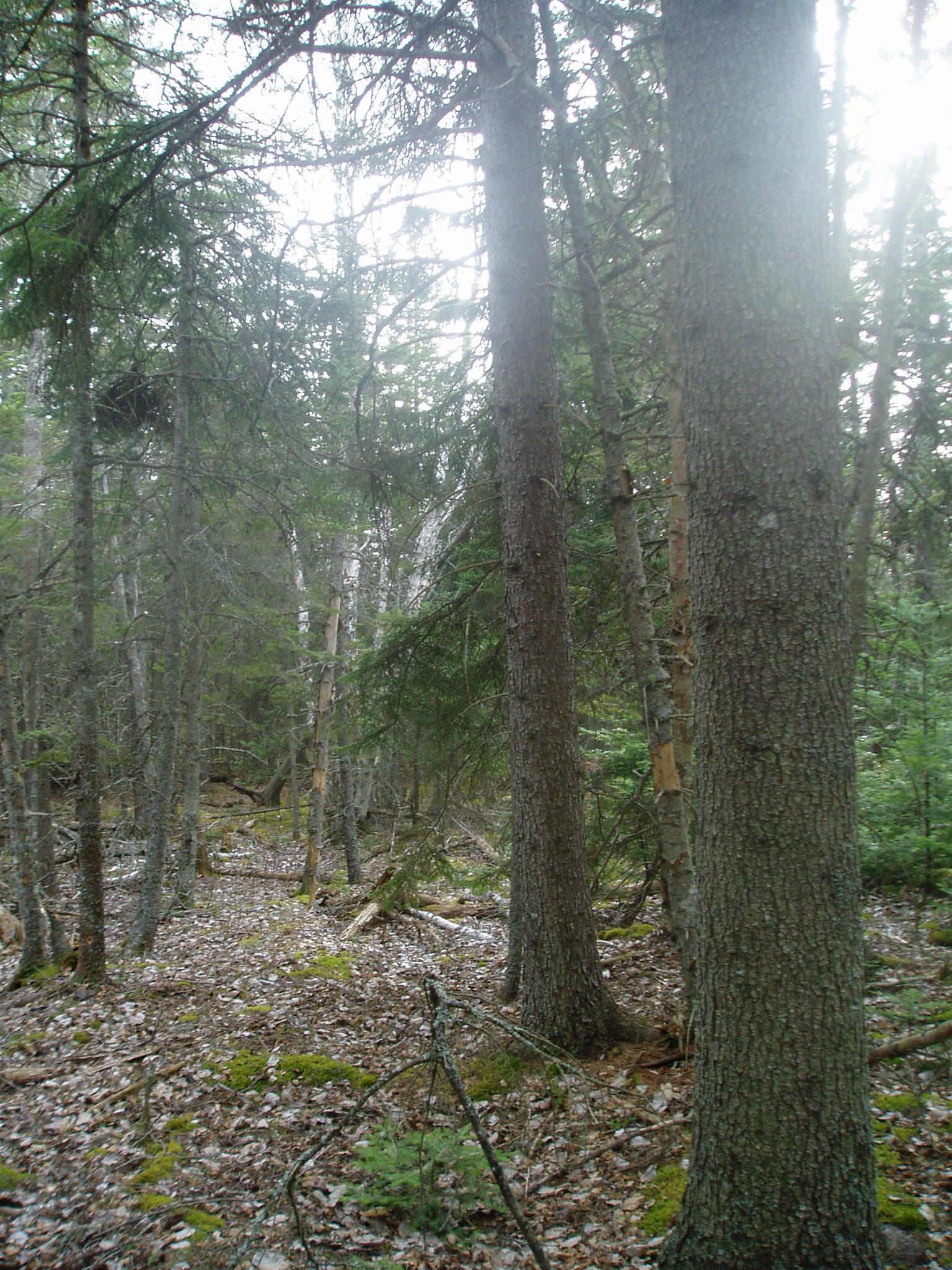
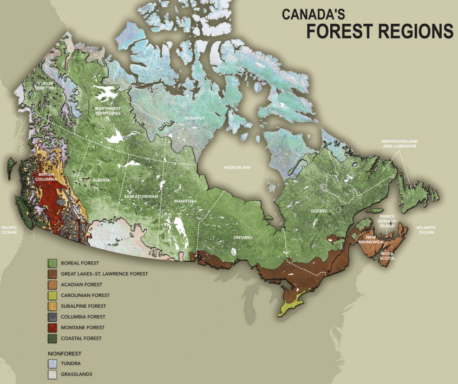









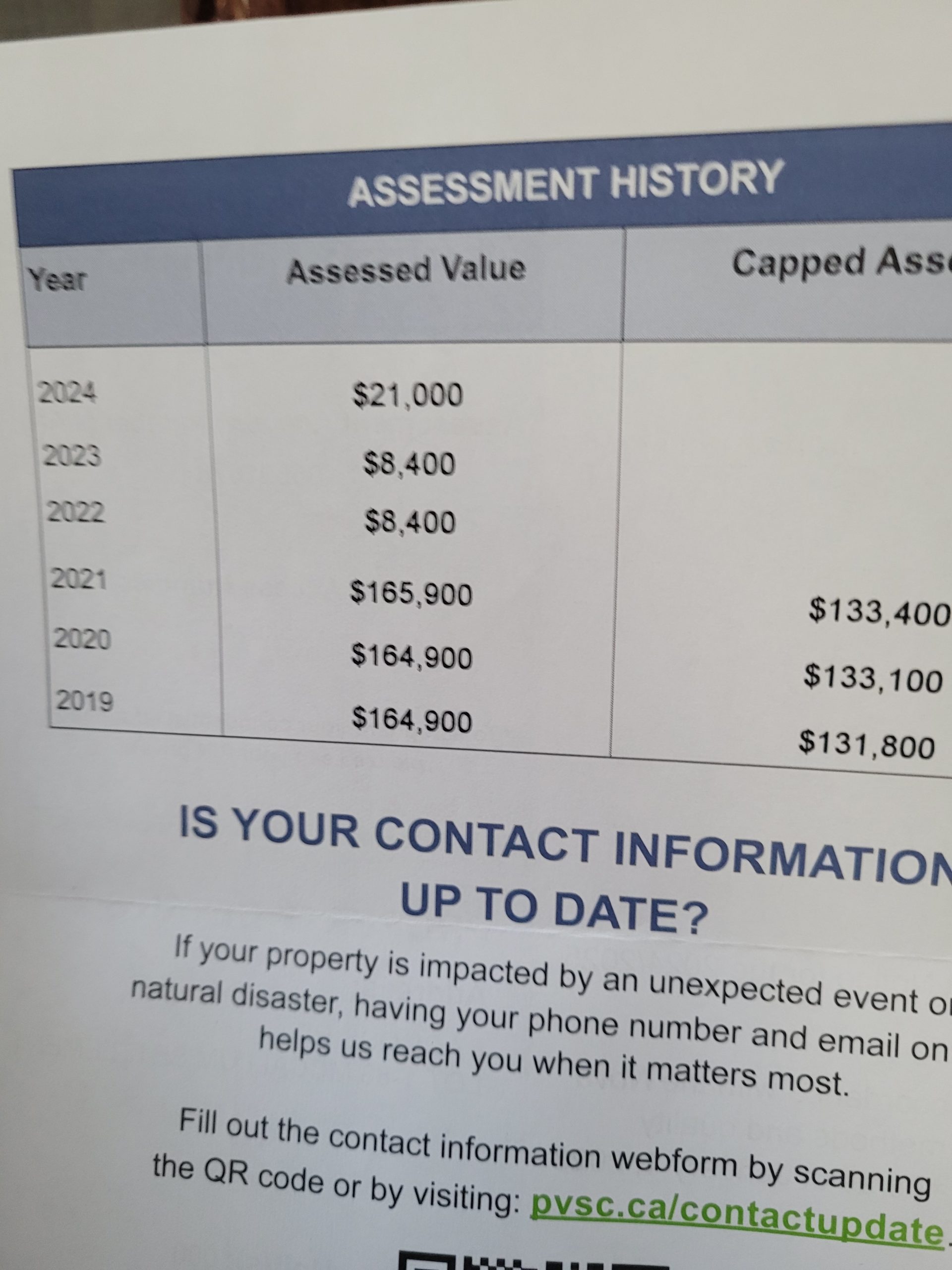 That’s the most important number! That reflects the property value that will determine your Nova Scotia property tax. Unless you have a capped assessment, in which case you’ll pay tax on the lower of the two numbers.
That’s the most important number! That reflects the property value that will determine your Nova Scotia property tax. Unless you have a capped assessment, in which case you’ll pay tax on the lower of the two numbers.